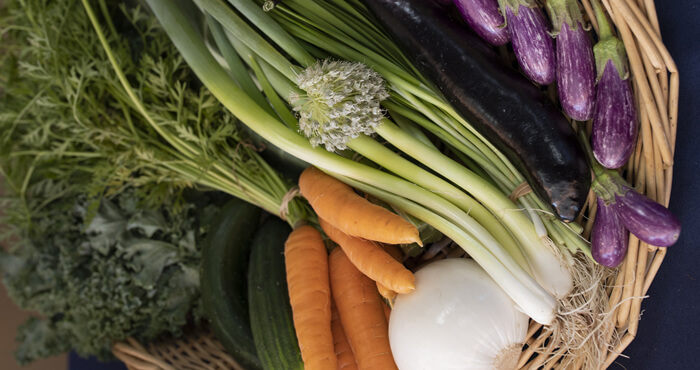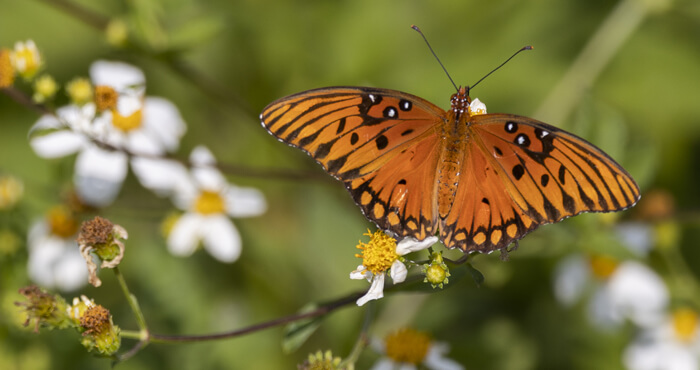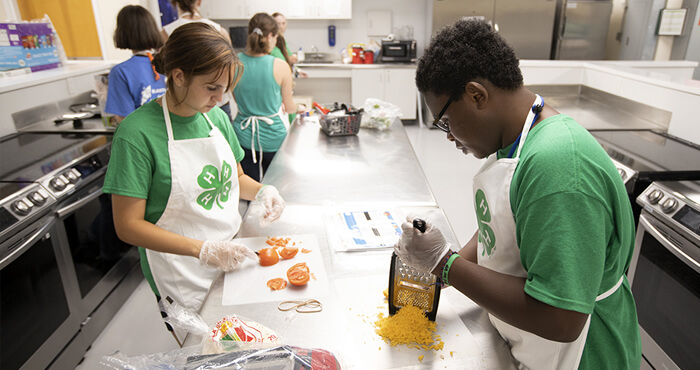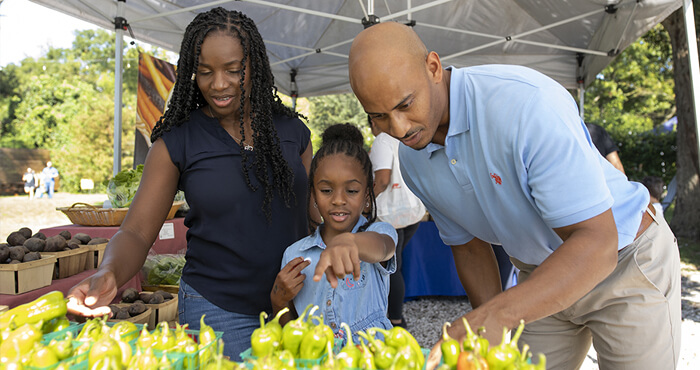
Nectar Plants
If you enjoy a bustling and buzzing garden, full of hummingbirds, butterflies, and bees, you might consider growing nectar plants that attract these creatures. No matter which pollinator you're hoping to attract, knowing the nutritional needs of each creature will help you choose the right nectar plant for your garden.
Bees
Many plants produce pollen for bees, but honeybees still need nectar for honey production. Major nectar plants contribute to honey crops that beekeepers produce, but even minor nectar plants are needed as forage to support honeybee populations.
An important note for home gardeners is that yellow jessamine (Gelsemium sempervirens) has been reported as toxic to honeybees and has weakened colonies in some areas.
Table 1. Select nectar plants for honeybees.
|
Common Name |
Scientific Name |
Region |
Bloom Time |
|
American Holly |
Ilex opeca |
N, C, S |
Early spring |
|
Black Mangrove |
Avicennia germinans, A. nitida |
C, S |
Jun – Jul |
|
Cabbage Palm |
Sabal palmetto |
N, C, S |
Jun – Jul |
|
Citrus |
Various |
Depends on variety |
Feb – Apr, sometimes Jun |
|
Flat-Topped Goldenrod |
Euthamia minor, |
N, C, S |
Sept – Nov |
|
Glossy Abelia |
Abelia grandiflora |
N |
|
|
Saw Palmetto |
Serenoa repens. |
N, C, S |
|
|
Seagrape |
Coccoloba uvifera |
C, S |
Apr – Jul |
|
Southern Magnolia |
Magnolia grandiflora |
N, C |
|
|
Sweetbay Magnolia |
Magnolia virginiana |
N, C, S |
|
Hummingbirds
Humingbirds need high-energy food to support their high-energy activity and flying. They will use the nectar they feed on quickly, so one hummingbird may visit hundreds of flowers in one day for feeding.
The best nectar plants for attracting hummingbirds have red, orange, or pink flowers. Through trial and error, hummingbirds develop a preference for these colors since most nectar plants often have blossoms that color.
Nesting hummingbirds need nectar from March through September, so choose plants that blossom during that time.
Table 2. Select nectar plants for hummingbirds in Florida.
|
Common Name |
Scientific Name |
Region |
Bloom Time |
|
Butterfly Milkweed |
Asclepius tuberosa |
N, C |
Spring – Fall |
|
Coral Bean |
Erythrina herbacea |
N, C, S |
Spring |
|
Coral Honeysuckle |
Lonicera sempervirens |
N, C |
Spring – Summer |
|
Firebush |
Hamelia patens |
N, C, S |
Spring – Winter |
|
Red Basil |
Calamintha coccinea |
|
Spring |
|
Red Star Hibiscus |
Hibiscus coccineus |
N, C, S |
Summer – Fall |
|
Scarlet Morning Glory |
Ipomea coccinea |
|
Summer – Fall |
|
Shrimp Plant |
Justicia brandegeana |
N, C, S |
Spring – Summer |
|
Trumpet Vine |
Campsis radicans |
N, C |
Spring – Summer |
|
Wild Azalea |
Rhododendron spp. |
N, C |
Spring |
Butterflies
One difference in attracting butterflies compared to bees and hummingbirds is that they also need larval host plants. While you can attract adults with nectar plants, they tend to hang around spots that are also suitable for their larvae.
This article only addresses nectar plants, but if you are interested in including host plants in your yard, you can find them listed by butterfly species in "Butterfly Gardening of Florida."
Different butterfly species have different preferences in flower color and size and have different feeding behaviors. Providing a variety of shapes, sizes, and colors of flowers will attract a diverse mix of butterfly species.
Table 2. Select nectar plants for butterflies in Florida.
|
Common Name |
Scientific Name |
Region |
Bloom Time |
|
Beach Sunflower |
Helianthus debilis |
N, C, S |
Summer – Fall (all |
|
Black-Eyed Susan |
Rudbeckia hirta |
N, C |
Summer – Fall |
|
Butterfly Milkweed |
Asclepius tuberosa |
N, C |
Spring – Fall |
|
Buttonbush |
Cephalanthus occidentalis |
N, C, S |
Spring – Summer |
|
Eastern Redbud |
Cercis canadensis |
N, C |
Spring |
|
Firebush |
Hamelia patens |
N, C, S |
Spring – Winter |
|
Purple Coneflower |
Echinacea purpurea |
N, C |
Summer |
|
Red Star Hibiscus |
Hibiscus coccineus |
N, C, S |
Summer – Fall |
|
Salvia (Sage) |
Salvia spp. |
N, C |
Summer – Fall |
|
Wild Azalea |
Rhododendron spp. |
N, C |
Spring |
Extrafloral Nectaries (EFN)
Some plants grow nectar-producing glands outside of their flowers. These extrafloral nectaries (EFN) provide an additional food source for hummingbirds, ladybugs and other insects, especially during extreme weather conditions.
For more plant suggestions and questions about landscape plant selections for your area, contact your local Extension agent.
Resources
Other UF/IFAS Sites
- Gardening Solutions
- Entomology and Nematology Department
- Environmental Horticulture Department
- FAWN: Florida Automated Weather Network
- Florida-Friendly Landscaping™ Program
- Florida Master Gardener Program
- IPM Florida
- Pesticide Information Office
UF/IFAS Publications
- Florida-Friendly Landscaping™ Program
- Central Florida Gardening and Landscaping Fact Sheets
- Starting a Garden
State & Federal Agencies
- Florida Department of Agriculture and Consumer Services (FDACS)
- Florida Department of Environmental Protection (FDEP)
- Florida Energy Systems Consortium (FESC)
- U.S. Environmental Protection Agency (EPA)
- USDA Plant Hardiness Zone Map--U.S. National Arboretum
Organizations & Associations
- American Community Gardening Association
- American Horticultural Society
- Florida Native Plant Society
- Florida Nursery, Growers and Landscape Association (FNGLA)
- North American Native Plant Society
Other Sites & Publications
UF/IFAS Mobile Web Apps



.jpg)

.jpg)
